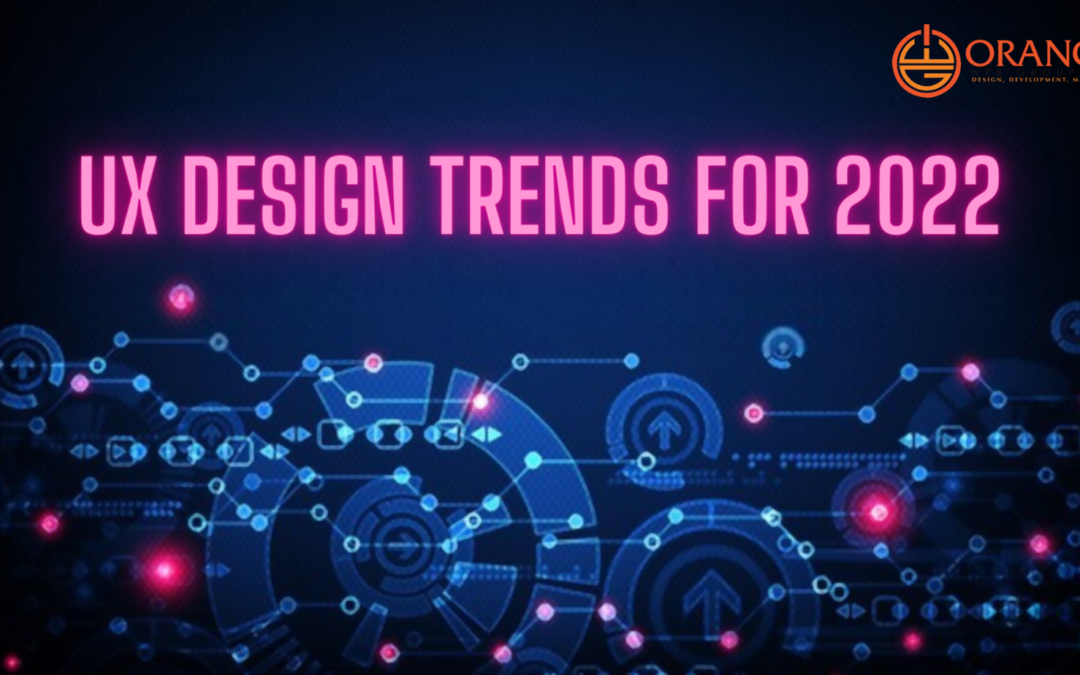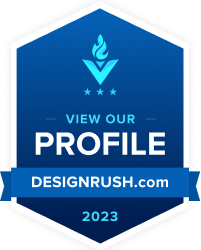The goal of UX design is to make things work for everyone involved. UX design enhances the user’s experience by making it more dynamic, seamless, and positive. Over the last two years, there has been a surge in internet and technology gadget usage as new artificial and virtual worlds have shifted the way we work and interact. UX design is one of the most dynamic design fields since there are more users, more demands, more changing user needs, and a lot more feedback.
We asked our community of UX Designer in Orange County which trends are on their radar for 2022 to give you a sense of what to anticipate in UX design. What we saw was a shift in focus toward storytelling, customization, and emotive interface design, all of which add depth and realism to user experiences. But there’s a lot more. Take a look at the top 8 UX design trends set to hit the market in 2022.
The eight leading UX design trends for 2022
- Storytelling
- Experiment with the placement of the navigation
- Seamless experience
- Voice-activated user interface
- Personalized experience
- Scrolling experiences with a twist
- Emotional design or emotive interaction design
- Data visualization
1. Storytelling
It’s no surprise that humans relate to stories. Cave paintings, fairy tales, and all the words and pictures that transcend through time and bring us together in shared narratives prove that stories have been with us since the beginning of time. It’s a social activity that allows people to connect with the story being told. At their foundation, these stories and experiences are emotional, elicit curiosity, and are immersive. Looking ahead to 2022, we see this timeless tool as a significant UX trend.
Businesses and customers may form a deep bond by creating an experience via storytelling. The more a user understands about a brand’s or a customer’s experience, the more likely they are to trust and relate to the brand.
All of these elements, or plot points, are woven into the user’s journey and story throughout the user experience. That linear progression reveals more, page by page, or with each scroll, as fresh information emerges about why this brand was created, what they are attempting to accomplish, and how the user fits into the goal, product, or service.
2. Experiment with the placement of the navigation
In UX, the location of navigation on the screen and how users will access it are two critical factors to consider. As mobile use and screen sizes continue to rise, UX designers will need to devise new ways for users to access the navigation menu, which is normally found at the top. UX designers will experiment with navigation placement this year, shifting navigation or crucial buttons and objects closer to the bottom of the screen, or a hybrid where the navigation is at the top but there are tab choices for key sites at the bottom.
It’s just as crucial for users to be able to locate navigation elements as it is to be able to reach them with their thumb. For example, users may benefit from bottom placement since the bar is simpler to reach, but the disadvantage is that it may be difficult to locate or adapt to. As a result, we expect to see more experimentation with navigation positions in the coming year. Only time will tell which approach will prevail.
3. Seamless experience
The goal of this UX trend is to create a user experience that flows seamlessly from one step to the next. To create a seamless experience, UX designers must focus on creating continuity, whether it’s in a specific scene or process, such as making a payment, or in the larger, more comprehensive picture, such as the entire customer journey from landing on the site, browsing the online shop, making a purchase, and receiving the item.
It’s critical that the user experience is consistent, and that each aspect within the experience flows naturally into another. The user will have a favorable experience if the experience flows smoothly.
We’re already seeing this with super apps, which are apps that provide a variety of functions via “mini-programs” or third-party integrations. The idea is to keep a user’s attention on your website or app for extended periods of time, whether through endless video streams or social and e-commerce integrations.
WeChat, for example, which began as a social network, now offers a full e-commerce experience within the app. The software also allows users to order a cab and apply for a loan. Instagram, Facebook, and Twitter, for example, have already integrated retail into their platforms. Bank applications make it easy to handle all of your financial needs in one location, including budgeting, spending monitoring, foreign transfers, payments, and money management.
4. Voice-activated user interface
Voice support (providing exceptional user experiences through voice control) is not a new UX trend. What’s new is how it’s shaping up right now. Originally, UX design for voice interfaces was screen-first, which meant that the screen was our first and primary point of contact. As a result, speech user interfaces might fall short, for example, by being glitchy, failing to interact with the app, or causing delays in when a person should talk.
Voice interfaces are becoming more important, and more people are using voice programs, thus there is a greater need to provide a seamless experience between the user and the voice application or software. That’s why it’s critical to consider the experience not just from a screen-first perspective, but also from a voice-first or at the very least a combination of the two.
5. Personalized experience
The trend of personalizing user experience isn’t going away anytime soon. With so much information available on the internet, more applications and websites are customizing their experiences to the individual user, whether it’s through delivering personalized recommendations or adhering to accessibility requirements. The UX designer’s purpose is to produce a design and a product that bridges the gap between what a user expects or wants and what they get.
Localization (recommendations based on a user’s location), demographics (statistical data such as age, sex, education, country, ethnicity, or religion, to name a few) and behavioral data (information acquired from a user’s activity on a website or app) are all examples of personalization. UX designers will utilize this information to build a personalized experience and journey based on what people anticipate, need, or want.
6. Scrolling experiences with a twist
Scrolling is a unique experience in and of itself, and it’s becoming increasingly innovative. The journey of revealing more and more elements of a website via scrolling is the emphasis of this UX trend. Elements in the background change and elements move about the page with the users or people who are fully involved in the website’s experience.
Scrolling has evolved from a passive and uninteresting way of getting there to an active and engaging experience that takes users on a trip. As a consequence, the experience is pleasant, inventive, and engaging.
7. Emotional design or emotive interaction design
Emotional design, often known as emotive interaction design, is all about developing experiences that elicit an emotional reaction from people. Users have a stronger bond with the website or app as a result of these interactions and have a more favorable and memorable engagement overall. They accompany the user on their trip and offer encouragement and support.
Animations and other effects are used to generate interactions that are similar to human interactions. Duolingo, for example, employs characters that applaud users on their accomplishments, present them with rewards, and offer help when they are unable to finish a task. The event is linked to positive feelings such as enthusiasm.
8. Data visualization
Data visualization is a crucial aspect of various experiences, but if done incorrectly, it may be obscure and overpowering. The data visualization UX design trend looks at how to make the experience more visually appealing, consumable, and entertaining. Bar charts, line charts, and pie charts, as well as the use of bright and brilliant colors, are some of the most apparent methods to achieve this in UX design.
Allowing users to extend and explore data using features like swiping and tapping encourages them to interact with it. When done correctly, these methods may provide a healthy balance of information to a user, from the overall picture to the finer details. All users will have a favorable and engaging experience thanks to a combination of contrasting colors and easily accessible facts and information. After all, you don’t want to overload consumers with information or make them feel as if they don’t comprehend it; this is a certain way to lose users.
Final Words
It’s an exciting moment to be a UX Designer in Orange County. User experiences are altering substantially in ways that benefit both the user and the company, thanks to AI’s ability to deal with data much more rapidly and efficiently. These trends work with and for the users, whether it’s adding excitement and adventure to the page through creative scrolling, data visualization, emotional involvement, or just delivering seamless, smoother, and customized experiences.
If you are looking for a UX Designer in Orange County to implement all your project ideas and demands, hire Orange Web Group, LLC. Our team will be glad to help you. Contact us today.




